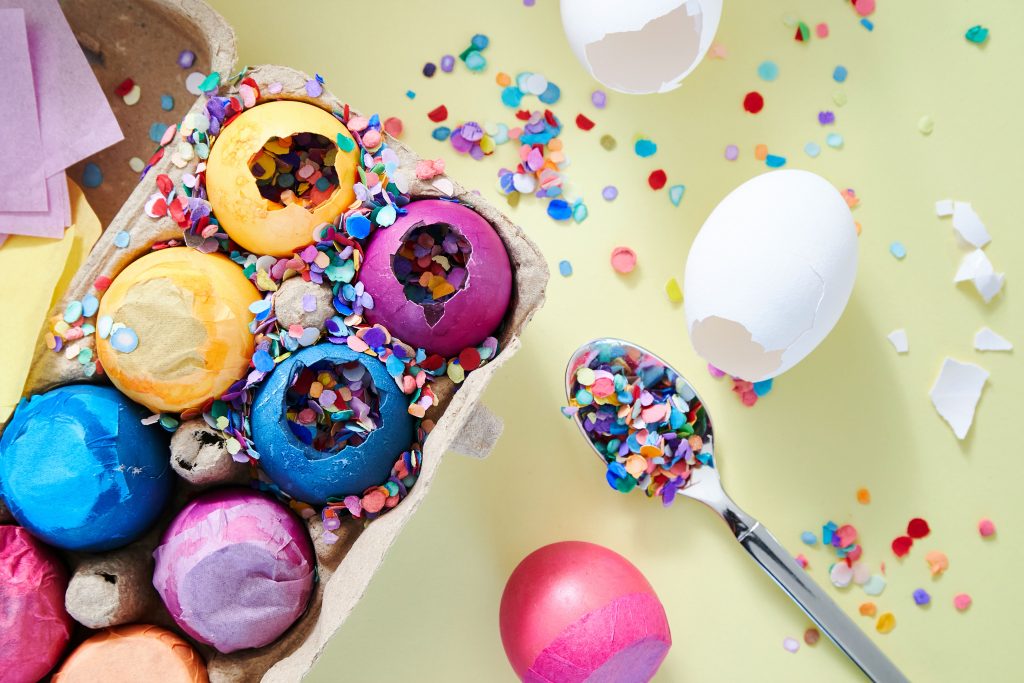Colorful Cascarones and Other Easter Traditions
They add vibrancy to any party or celebration, but they’re most common around Easter. You’ve almost definitely seen them — or even painted one yourself. We’re talking, of course, about cascarones: the brightly colored egg shells that have become a staple of springtime festivities. Yet despite their popularity, many people might not know the origins of these artful eggs or that they are part of a vast, vibrant, and very global collection of Easter egg traditions.
Here’s a little background on cute and colorful cascarones:

How to Make Them
The word “cascarone” comes from the Spanish word cáscara, meaning “shell.” They’re simple to craft, too: All you need to make one is an empty eggshell, some colorful confetti, and tissue paper to seal your creation. Many people use hard-boiled eggs and a bowl full of food coloring, then call it a day. And while they are most often associated with Easter, you’ll also see cascarones during Carnaval and Cinco de Mayo. In fact, they have a rich cultural history, as do similar Eastertime celebrations around the world.
Cascarones Through the Eras
According to historians, you can trace the origins of cascarones across continents and centuries. They’re thought to have originated in China, and from there, the legendary Marco Polo brought them to Italy, then Spain. Before confetti became the popular filler, cascarones brimmed with powdered perfume, and shy couples used them to flirt. Nowadays, many folks believe that having cascarones broken over your head will bring you good fortune — after the confetti cleanup, of course.

Other Easter Egg Traditions
If you’d like to try something new with your eggs this Easter, you might consider adopting one of these fun and distinctive celebrations from other cultures. In Scotland, for instance, many families mark Easter Sunday with a traditional “egg roll”: You boil and paint your egg, then take it down to the nearest park to roll your creation down a hill. Naturally, the person whose egg rolls the farthest distance (without breaking) is the winner.
Elsewhere, Easter celebrants take part in the storied tradition commonly called “egg tapping.” In Greece, India, Croatia, and Romania, it’s customary to boil and decorate your egg, then put it on display starting on the Thursday before Easter. When Sunday arrives, everyone takes their eggs and plays a game called tsougrisma, or “tapping.” The goal, as you might have surmised, is to crack your opponent’s egg without breaking yours. You only win if your egg doesn’t crack, which means you must create something both tough and creative. That’s a tricky balancing act, but ultimately, it’s not about the competition: It’s just another creative way to enjoy the holiday with the people you love most.
For more Easter festivities, check out this step-by-step guide to dipping and dyeing colorful eggs that are perfect for this year’s Easter egg hunt.
© 2023 Texas Farm Bureau Insurance



